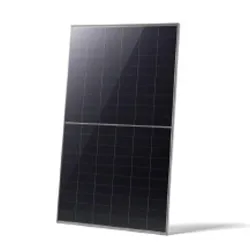Dimensions and Specifications of 325W Solar Panels for Efficient Energy Generation
Understanding the Size of a 325W Solar Panel
As the world increasingly turns towards renewable energy sources, solar panels have gained significant attention for their ability to harness the sun's power. Among the various options available in the market, a solar panel rated at 325 watts (W) has emerged as a popular choice for both residential and commercial installations. This article explores the size, efficiency, and applications of a 325W solar panel, helping potential users understand if it fits their energy needs.
What is a 325W Solar Panel?
A 325W solar panel is designed to convert sunlight into electricity, producing a maximum of 325 watts under optimal conditions. The term 'watt' refers to the power output of the panel, which depends on several factors including the panel's efficiency, its size, and the intensity of sunlight it receives. Solar panels come in various sizes and wattage outputs; however, a 325W panel strikes a balance between efficiency and footprint, making it an ideal choice for many installations.
Dimensions of a 325W Solar Panel
Typically, a 325W solar panel measures approximately 65 inches by 39 inches (about 1.65 meters by 1 meter). This size is fairly standard in the industry, resulting from the dimensions that optimize the balance between power output and installation space. The physical dimensions can vary slightly depending on the manufacturer and the technology used in the panel, but most will fall within a similar range.
Efficiency and Technology
Efficiency in solar panels refers to the amount of sunlight converted into usable electricity. A 325W solar panel generally boasts an efficiency of around 18% to 20%, depending on the technology used (such as monocrystalline or polycrystalline silicon). Monocrystalline panels tend to be more efficient and space-saving, while polycrystalline panels may offer a lower price point with slightly reduced efficiency.
325w solar panel size

The advancements in solar technology mean that newer models tend to have higher efficiency ratings and smaller sizes, allowing consumers to generate more power in less space. It’s essential for potential buyers to consider not only the wattage but also the efficiency and overall performance of the panel.
Applications of 325W Solar Panels
The size and output of a 325W solar panel make it suitable for a variety of applications. In residential settings, homeowners often use multiple 325W panels to meet their energy needs. For instance, a typical home might require around 5,000 kWh of energy per year. By installing an array of 15 to 20 panels, homeowners can significantly reduce their electricity bills and even become energy independent.
In commercial applications, these solar panels are often used in larger installations where space is more readily available. Rooftop installations on warehouses and industrial buildings can utilize the efficiency of multiple 325W panels, maximizing the available roof space while generating substantial amounts of electricity.
Installation Considerations
When planning an installation of 325W solar panels, it's crucial to consider several factors. The orientation and tilt of the panels play a significant role in their overall performance. Ideally, panels should be mounted facing south in the northern hemisphere to capture the maximum sunlight. Additionally, shading from nearby trees or buildings should be minimized to ensure the highest efficiency.
Conclusion
In conclusion, a 325W solar panel offers an excellent combination of size and power output for anyone looking to invest in solar energy. Its dimensions make it easy to install in various settings, while its efficiency meets the needs of both residential and commercial users. As technology advances and the world leans further into renewable energy, understanding the specifications and benefits of systems like the 325W solar panel will empower consumers to make informed decisions about their energy future. Transitioning to solar energy not only helps reduce carbon footprints but also offers long-term economic benefits, making it a wise choice for the environmentally conscious individual or business.
-
String Solar Inverter: The High-Efficiency Solution for Smart Solar EnergyNewsJul.14,2025
-
Revolutionizing Rooftop Energy with the Power of the Micro Solar InverterNewsJul.14,2025
-
Power Independence with Smart Off Grid Solar Inverter SolutionsNewsJul.14,2025
-
On Grid Solar Inverter: Powering the Future with Smart Grid IntegrationNewsJul.14,2025
-
Monocrystalline Solar Panels: High-Efficiency Power for the Future of Clean EnergyNewsJul.14,2025
-
Bifacial Solar Panel: A Smarter Investment for Next-Generation Energy SystemsNewsJul.14,2025







